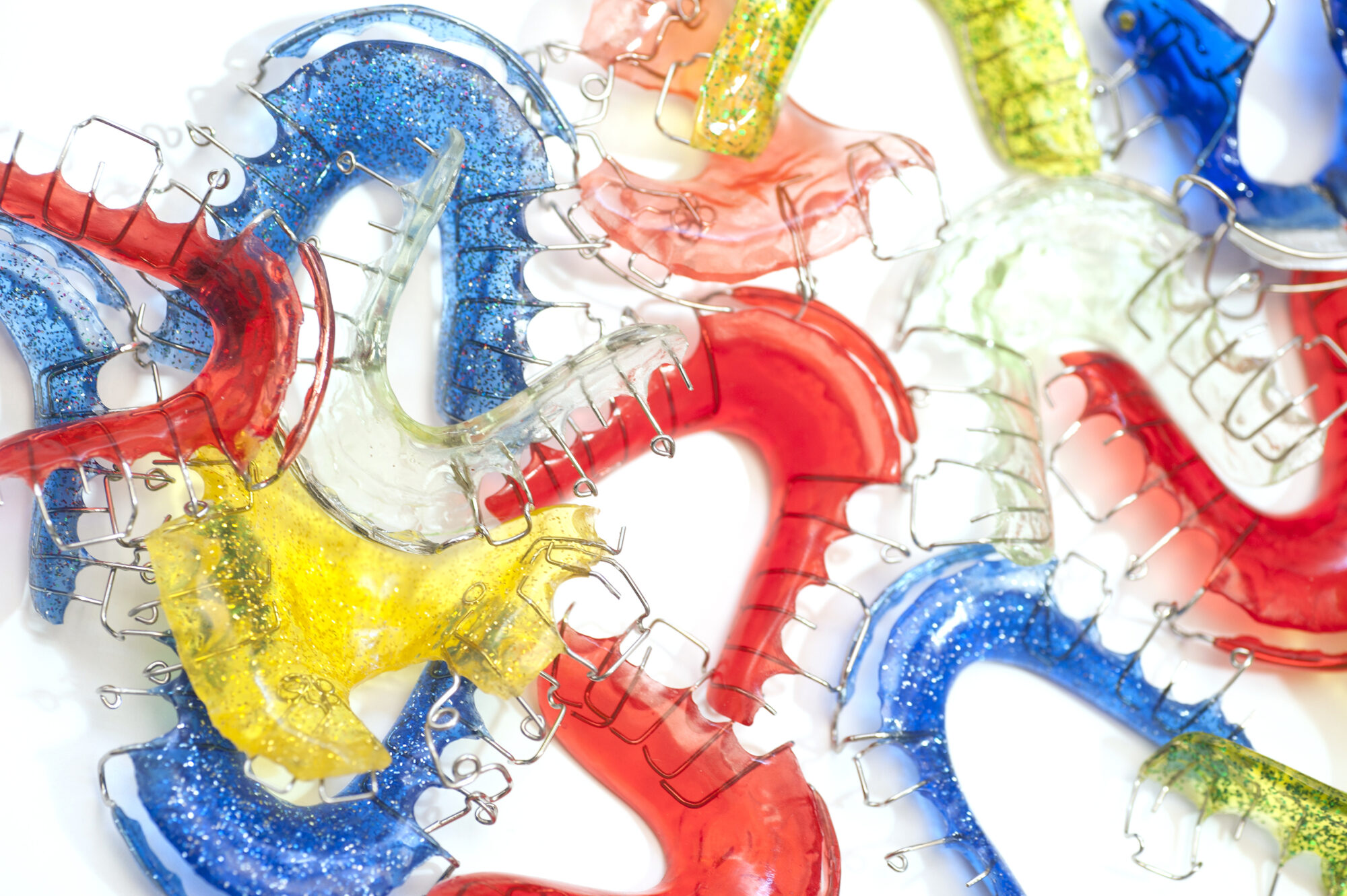An Essential Guide to Lifelong Smile Maintenance
Completing orthodontic treatment is an exciting milestone, whether you used Invisalign, traditional braces, or another alignment system. But achieving a beautiful smile is only part of the journey—maintaining those results is equally essential. That’s where orthodontic retainers come into play. Retainers help hold teeth in their new positions after braces or aligners have done their work, preventing unwanted shifts or “relapse” over time.
This comprehensive guide explores why retainers are necessary, what can happen if they aren’t worn, the biology behind retention, and how long you need to wear them. We’ll also dive into the different types of retainers available, including Essix, Hawley, Vivera, Theroux, fixed retainers, spring aligners, and nightguards, as well as the risks, benefits, and alternatives for each. At Rise + Smile Orthodontics, Dr. Mathue Faulkner, DDS MS, a board-certified orthodontist in Austin, Texas, is dedicated to helping patients maintain their results with the best retainer options available.
Why Retainers Are Needed After Orthodontic Treatment
After braces or aligners move your teeth into their ideal positions, your smile isn’t completely stabilized just yet. Teeth naturally have a tendency to drift back toward their original positions—a process called “orthodontic relapse.” Retainers act as a holding mechanism to prevent this drift and keep your smile in its corrected state.
What Happens Without Retainers?
Without retainers, the risk of relapse is high, especially within the first few months after treatment. Over time, the periodontal fibers (connective tissues around the teeth) and surrounding bone adapt to the new positions of the teeth, but this healing process can take up to a year or more. During this time, retainers are essential in allowing the surrounding structures to solidify in the new alignment. Even when that healing is complete, the teeth will still have a strong tendency to move back to their original positions. At Rise + Smile Orthodontics, we’ve seen patients come in after 20+ years of faithful retainer wear who start to see unwanted tooth movement shortly after losing those retainers. Without retainers, you may see gaps reappear, or the bite might shift, resulting in a gradual loss of the correction achieved during orthodontic treatment. Retainer wear is a lifetime commitment.

The Healing Process of Bone and Periodontal Fibers
In order to move teeth during orthodontic treatment, the body must remodel the bone around the desired tooth positions. Specialized cells called osteoclasts tear down the bone in the direction of movement, and then osteoblasts build up the bone in the wake of the movement. This process requires time to stabilize:
1.Bone Remodeling: As teeth move, they exert pressure on the alveolar bone, which triggers bone resorption on one side of the tooth and bone deposition on the other. This process takes time and continues even after orthodontic appliances are removed. Retainers hold the teeth in place while the bone solidifies in the new alignment.
2.Periodontal Fibers and Relapse: The periodontal fibers that surround the roots of your teeth also undergo changes during orthodontic treatment. These fibers can take much longer to adjust than the bone. If retainers are not worn, these fibers can pull teeth back toward their original positions, increasing the risk of relapse.
How Long Do You Need to Wear Retainers?
The retention phase is a lifelong commitment for most patients. Retainer wear is typically broken down into two main phases:
1. Initial Phase (Months 1–6): During this time, retainers should be worn full-time (around 22 hours per day), removing them only for eating, drinking, and oral hygiene.
2. Maintenance Phase (After 6 Months): After the initial stabilization, patients can usually reduce wear to nighttime only. However, wearing retainers consistently is key to preventing relapse throughout your life. Even years after treatment, it’s advisable to wear retainers a few nights a week to keep teeth in alignment.
Each patient’s needs may vary slightly, so consult your orthodontist for a personalized retention schedule.
Types of Orthodontic Retainers: Options, Benefits, and Considerations
Various types of retainers are available, each with unique benefits, risks, and maintenance requirements. Here are some popular options:
1. Essix Retainers
- Description: Essix retainers are clear, plastic, removable retainers similar in appearance to Invisalign aligners. They are custom-molded to fit snugly over the teeth.
- Benefits: Essix retainers are nearly invisible, easy to wear, and do not affect speech as much as some other options.
- Risks: They can wear down over time, requiring replacement. Essix retainers are also prone to cracking if not handled carefully.
- Ideal For: Patients who want a discreet retainer and are diligent about maintaining it.
2. Hawley Retainers
- Description: Hawley retainers consist of a metal wire that runs across the front of the teeth and is anchored by an acrylic base on the roof of the mouth.
- Benefits: They are durable, adjustable, and easy to repair if damaged.
- Risks: Hawley retainers are more visible and can affect speech initially. The metal wire can be uncomfortable for some patients.
- Ideal For: Patients seeking a long-lasting, adjustable option.
3. Vivera Retainers
- Description: Vivera retainers are made by Invisalign and are similar in appearance to Essix retainers, but they are crafted from a more durable material.
- Benefits: Vivera retainers are strong, clear, and come in sets, so replacements are readily available.
- Risks: They are typically more expensive than standard Essix retainers but last longer.
- Ideal For: Patients looking for a high-quality, durable retainer with excellent clarity.
4. Fixed Retainers
- Description: Fixed or “bonded” retainers are attached to the back of the teeth (often lower front teeth) with a small wire. They stay in place permanently.
- Benefits: Fixed retainers provide continuous retention without the need to remember daily wear.
- Risks: They can make flossing challenging and may increase the risk of plaque build-up if not cleaned properly. Breakage can vary from patient to patient, but fixed retainers on the upper teeth generally have a high rate of breakage. As such, upper fixed retainers are often not recommended. Additionally, breakage on a fixed retainer is not as obvious as a removeable retainer, and patients may not even realize it’s broken until after the teeth start to move.
- Ideal For: Patients at high risk of relapse, particularly for lower front teeth.
5. Spring Aligners
- Description: These retainers can make minor adjustments to teeth alignment while retaining them.
- Benefits: Spring aligners can correct minor shifts if teeth start to move out of alignment.
- Risks: They are not suitable for major movements and may feel bulkier than other retainer types. Additionally, these type of retainers are generally more expensive due to the lab fees and required follow up visits.
- Ideal For: Patients needing minor adjustments or who are at risk of relapse.
6. Theroux Retainers
- Description: Typically used for Phase I cases, these retainers are similar to a Hawley retainer in that they cover the roof of the mouth. Instead of wires, however, the acrylic also wraps lightly over the edge of the front teeth and back molars.
- Benefits: There retainers are very durable, hold maxillary expansion well, and are comfortable as long as they are worn consistently.
- Risks: Without consistent wear, these retainers can be more difficult to adjust to fit.
- Ideal For: Phase I patients who find Hawley retainers uncomfortable, but need to hold the width from an expander.
7. Nightguards (as Retainers)
- Description: Nightguards are thicker than standard retainers and primarily designed to protect against teeth grinding/clenching.
- Benefits: For patients who grind their teeth, nightguards protect against wear and can serve as a retainer for minor alignment retention. Nightguards are more balanced than other retainers, and they can support the TMJ and chewing muscles in a way that other retainers are unable to do.
- Risks: Nightguards are bulky and more expensive. Some patients do not tolerate their bulk well, and end up not wearing their retainers.
- Ideal For: Patients who grind/clench their teeth and need dual-purpose protection.





Frequently Asked Questions About Orthodontic Retainers
1. How long do I need to wear my retainer?
Initially, most orthodontists recommend full-time wear (22 hours per day) for the first 1-6 months, transitioning to nightime wear thereafter. Some degree of retainer wear is often necessary for life to prevent relapse.
2. What happens if I lose my retainer?
Contact your orthodontist as soon as possible. Going without a retainer for extended periods can lead to relapse. Many offices, like Rise + Smile Orthodontics, offer replacement retainers or even retainer insurance programs.
3. How do I clean my retainer?
Essix and Vivera retainers should be cleaned daily with mild soap and water. Avoid hot water, which can warp the plastic. Hawley retainers can also be brushed with toothpaste. Be sure to follow your orthodontist’s instructions for specific cleaning techniques.
4. Do fixed retainers need to be replaced?
Fixed retainers can last many years, but they may need periodic repairs or adjustments. Regular dental check-ups are essential to monitor them.
5. Can I wear my nightguard instead of a retainer?
Nightguards can sometimes serve as retainers, but they are typically less precise than orthodontic retainers unless they are made from hard acrylic. Discuss with your orthodontist if a nightguard is an option for you.
6. Are retainers painful?
Retainers are generally not painful as long as you’re consistent with wearing them. You may, however, experience some discomfort or soreness when you first start wearing them, especially if you’ve had recent orthodontic treatment or haven’t worn them for a while.
7. Can I eat or drink with my retainers in?
No, you should remove your retainers before eating or drinking anything other than water. Food particles and sugary drinks can damage your retainers and contribute to tooth decay.
8. Will my teeth shift if I stop wearing my retainers?
Yes, your teeth can shift if you stop wearing your retainers, especially during the initial healing period. It’s important to follow your orthodontist’s instructions regarding retainer wear to maintain your results. A healthy smile is a lifetime commitment.

Orthodontic retainers play a critical role in maintaining your beautifully aligned smile. Without consistent retainer wear, teeth have a natural tendency to shift back, especially during the first year after treatment. Whether you choose an Essix, Hawley, Vivera, or fixed retainer, Dr. Mathue Faulkner, DDS MS, at Rise + Smile Orthodontics can help you determine the best option to ensure long-term success. Retainers are a lifelong commitment, but they’re worth it to keep your smile looking its best for years to come.
 (512) 892-1188Free Consult
(512) 892-1188Free Consult


